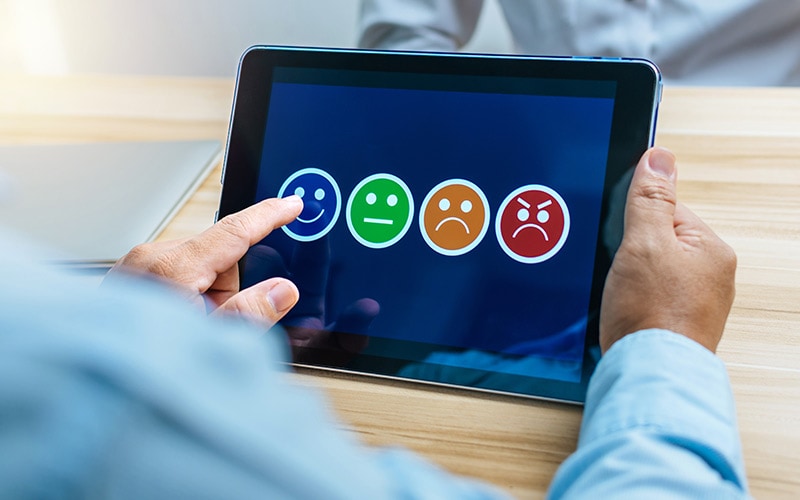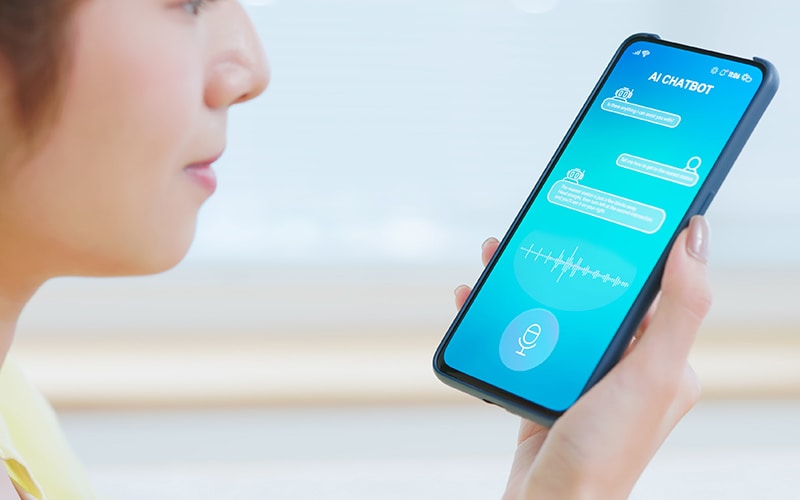Insights
- Service level agreements (SLAs) have been standard practice in service delivery.
- However, the metrics they measure don’t provide employers with a comprehensive view of employee experience throughout the process.
- With growing emphasis on employee experience, it’s time for companies to adopt a user-centric mindset and introduce experience level agreements (XLAs) for service delivery improvement.
- AI-powered tools can help measure employee experience, provide continuous and actionable employee feedback, and enable timely remedial actions when necessary.

The digital workplace landscape is constantly evolving. A major shift, as Infosys’ The Future of Work 2023 report puts it, is that from “employees per square meter” to “experience per square meter”, alluding to how organizations are becoming aware of the need to provide quality experiences to their employees rather than only concentrating on headcount.
Prioritizing employee experience (EX) can be lucrative for organizations. The move from having only service level agreements (SLAs) to including experience level agreements (XLAs) can foster a better employee experience. Although introducing the latter can be challenging, a strategic combination of technology, a robust organizational structure and governance, and incentivized improvements can simplify the process.
The move from having only service level agreements (SLAs) to including experience level agreements (XLAs) can foster a better employee experience.

What distinguishes XLAs from SLAs
SLAs have been the norm in service agreements between a service provider and the client organization. They establish parameters to measure service in terms of ticket volume, availability, response time, and resolution time, with penalties for any breach of agreement.
XLAs, in contrast, prioritize the stakeholders’ (employees) overall experience. XLAs add outcome-based metrics that prioritize each step of the employee’s interaction, identify the factors driving satisfaction, and assess the effectiveness of the services in helping employees achieve desired outcomes. Organizations leverage tools powered by AI, and correlate telemetry data from a range of employee interaction points, including sentiment analysis of chat and voice interactions, to measure employee experience and make improvements where necessary.
The need to include experience level agreements has become important especially with employee experience gaining significance for organizations owing to its positive impact on the bottom line and employees demanding a seamless and consistently positive work experience. The emphasis on wanting to deliver personalized and tailor-made service delivery experiences to employees adds to the relevance of XLAs as they help measure the quality of employees’ experiences and enhance them. Measuring service delivery only through SLAs gives a partial view of underlying problems, whereas introducing XLAs helps organizations understand the quality of the employee’s experience, rather than just the quantity of tickets resolved. It helps avoid the watermelon effect, a metaphor for how SLA metrics – such as tickets resolved, and time taken that appear “green” – might portray success on the outside, while there might be underlying issues such as unsatisfactory employee experiences, or “reds” on the inside, that wouldn’t have been considered, therefore not providing an accurate picture.
Continuous employee feedback through surveys, sentiment analysis and built-in tools for monitoring the employee experience helps the service provider understand problem areas and take action, as opposed to limiting it to whether the need was met, or wasn’t met, or the speed of the resolution, as is the case with SLAs. It helps identify not just what went wrong, but how the experience can be improved. This turns the focus to creating a user-centric approach, where the employee experience becomes a key factor. However, to make this shift to a user-centric approach, organizations will have to make sure their foundational XLAs are properly established.
XLAs help identify not just what went wrong, but how the experience can be improved. This turns the focus to creating a user-centric approach, where the employee experience becomes a key factor.
Why it presents challenges
Traditionally, when it comes to employee experience, digital workplace organizations have focused on device experience – in other words, how employees interact and work with devices. Many organizations seem to believe that if their device experience management is in place and efficient, their employee experience management is taken care of.
Understanding the impact of XLAs and improvement in future service depends on continuous and effective feedback from employees, but companies struggle with identifying effective means of collecting that feedback. Deciding how to measure the impact in terms of what tools and metrics to use can also be challenging.
Once they have gathered data on employee experience, turning it into actionable insights to better the experience, and more importantly, identifying who is accountable for it – IT, HR, or other departments – can be a tough decision. But technology can help here, together with changes in governance and organizational structures such as appointing a leader and team dedicated for XLA enhancements.

Introducing XLAs successfully
-
The first step towards incorporating XLAs is understanding that employee experience is the result of a range of experiences, from the workday experience, interactions throughout the day, internal communications, device service quality, team collaboration using a range of tools, access to information, tools, and expertise, as well as learning opportunities including training and digital reskilling, to social interactions, work culture, and policies. The XLAs will need to span all these areas of employee experience and efficiently manage their experience across the organization.
“Organizations need to identify the moments that matter and then measure these moments with key experience indicators [KEIs] to arrive at XLA metrics. Infosys has a comprehensive KEI Framework approach, mapped against three user experience dimensions – convincing performance, amazing experience, and changing digital mindset, that is, a move from manual interventions such as calls towards self-serviced and automated solutions. We have assisted many clients in transitioning from SLAs to XLAs successfully,” says Aanand Kumaraswamy, senior industry principal, digital workplace ecosystem at Infosys.
For multinational energy company E.ON, Infosys – as part of its Modern Workplace Program – introduced the key experience indicators to measure the effectiveness of using devices such as laptops, mobiles, and rugged devices for field engineers, and measured the before/after experience scores to help the client understand how employees were experiencing them. It monitored experience feedback through online surveys. Active highlighting of malfunctioning processes and suggestion of automation capabilities such as conversational IVR services outside classic business hours resulted in an improved helpdesk L1 resolution rate.
-
Unlike SLAs, which are usually identified and owned by IT, XLAs are more diffuse as the inputs will come from across the organization: HR, IT, digital workplace services, service desk and user experience, business operations, among others. However, a single leader should oversee XLAs to drive and maintain focus. “Setting up a central function like an experience management office [XMO] that fosters collaboration between IT, HR, and business teams will be effective in ensuring that XLAs can deliver measurable improvements to employee experience, ultimately driving holistic business outcomes,” says Shishank Gupta, senior vice-president and head of the digital workplace ecosystem and Microsoft practice at Infosys. “Today, in our conversations with clients, we are talking about establishing an XMO as a governing body that will bring together multiple stakeholders invested in improving employee experience, and clearly define the experiences that matter.”
Setting up a central function like an experience management office [XMO] that fosters collaboration between IT, HR, and business teams will be effective in ensuring that XLAs can deliver measurable improvements to employee experience, ultimately driving holistic business outcomes,” says Shishank Gupta, senior vice-president and head of the digital workplace ecosystem and Microsoft practice at Infosys.

-
Rather than use just tools that are limited to device experience, organizations can use AI-powered tools and telemetry data across employee interaction points, to measure employee experience effectively. “There is a need for an observability layer across the digital workplace to capture the data signals and telemetry. Besides, an aggregation layer where, using API integrations, data lake and analytic engines, one can correlate the data points to enable proactive management and measurement of employee experiences,” says Kumaraswamy.
Infosys has built an end user experience dashboard for a large UK-based consumer goods company that aggregates and correlates data captured via digital employee experience (DEX), Microsoft 365 Analytics, ServiceNow, Happy Signals, HR IT and enterprise systems powered by an analytics engine, data lake and APIs. Kumaraswamy adds: “This helps measure employee experience and provides the insights needed to take remedial actions to enhance employee experience.”
-
Organizations can incentivize employee experience improvements as part of XLAs to drive better service and employee experiences. The incentives can be in the form of credit points or even financial target payouts when a service provider exceeds in delivering superior employee experiences. Unlike SLA metrics or key performance indicators (KPIs), which are centered around and promote avoiding bad experiences for employees and penalties in case of failure, XLAs shift the focus to creating a memorable experience instead of simply avoiding an unpleasant one, and to incentives and a rewards culture which could make the experience motivating for the XLA helpdesk executives as well. Training XLA staff in the nuances of employee experience and how to enhance it can help them hone their skills.
-
To ensure that employees have a positive experience with the devices they use, organizations can use tools that monitor their usage of organizational apps. These tools can also enhance software adoption by offering real-time guidance for improvement. There are platforms that enable companies to easily design their intranet and integrate generative AI for seamless implementation. Additionally, other platforms assist companies in identifying IT issues faced by employees and provide automated AI-driven solutions to resolve them.
Certain project management tools facilitate employee collaboration by establishing process flows, project workflows, and whiteboarding frameworks and templates, while ensuring timely updates to all team members, enabling agile and hybrid work practices. Desk booking apps offer suggestions on where team members are seated, allowing individuals to book seats close to them for better in-person collaboration. Some are so advanced that they assist employees in selecting spots based on their temperature preferences. Digital signage technology lets organizations create interactive signages across offices which integrate messages from Microsoft Teams and social media networks into the digital boards for ease of communication. Incorporating these innovative tools can help companies deliver a rich employee experience.
Project management tools facilitate employee collaboration by establishing process flows, project workflows, and whiteboarding frameworks and templates, while ensuring timely updates to all team members, enabling agile and hybrid work practices.
“Generative AI needs to be harnessed to empower employees by offering intelligent searches, self-healing capabilities, intuitive NLP-led interactions, and learning, which will not only increase employee productivity, but also offer better workplace experiences, leaving employees with enough bandwidth to focus on other aspirational goals,” says Gupta.
Driving a holistic employee experience does not require doing away with SLAs, but complementing them with the benefits of XLAs. That said, organizations need to understand that creating service delivery that leads to good employee experiences requires gradual and continuous service improvement. It is crucial to prioritize creating an exceptional experience by consistently gathering and effectively utilizing employee feedback as a benchmark for success, rather than solely relying on metrics like the volume of tickets resolved through self-service or digital means.






